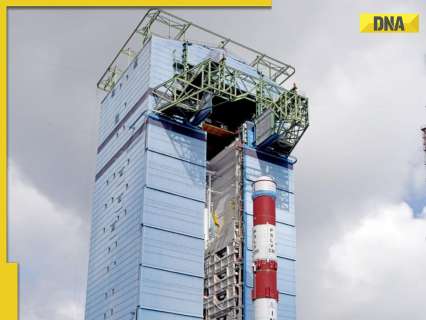
This initiative is the result of collaboration between the SJC Institute of Technology and the Upagraha Amateur Radio Club (UpARC) at ISRO’s UR Rao Satellite Centre, says Girish Linganna
The BGS ARPIT payload, developed by the students of the SJC Institute of Technology, Chikkaballapur, in Karnataka, represents a significant leap in India’s space exploration journey. As part of the PSLV-C60 Space Docking Experiment (SpaDeX) mission, this groundbreaking innovation emphasises the growing role of academia in the nation’s space sector and demonstrates the capability of Indian students to contribute to cutting-edge space research.
Role of BGS ARPIT in the Mission
The BGS ARPIT payload serves as a platform for student-led experimentation and supports amateur radio communication, showcasing the innovative contributions of students to space-based communication technologies. The BGS ARPIT payload is a multi-mode message transmitter capable of sending audio, text and images from space to Earth using FM signals in the VHF frequency band.
It supports global amateur radio services, enabling students and researchers to experiment with space-based communication systems. This payload not only showcases the technical prowess of Indian students, but also underscores their potential in advancing the country’s ambitious space programmes.
The SJC Institute of Technology, established in 1986 under the Sri Adichunchanagiri Shikshana Trust, reflects its parent organization’s vision of fostering innovation and technical excellence. Spearheaded by Jagadguru Sri Sri Sri Dr Nirmalanandanatha Mahaswamiji, the 72nd Pontiff, the trust manages several educational institutions across Karnataka. The participation of SJC students in this mission embodies this vision, inspiring the next generation of space scientists and engineers.
Technological Milestone: SpaDeX
The SpaDeX mission, launched aboard ISRO’s PSLV-C60, is a cost-effective technology demonstrator designed to advance India’s capabilities in future space operations. The mission focuses on demonstrating rendezvous, docking and undocking capabilities through two small spacecraft—SDX01 (the Chaser) and SDX02 (the Target)—placed in a 470-kilometre circular orbit.
These technologies are vital for future missions involving:
– Lunar exploration and sample return missions
– Construction and operation of the Bharatiya Antariksh Station (BAS)
– Multi-satellite cooperative operations and in-space robotics
Each spacecraft weighs approximately 220 kg and is equipped with indigenous technologies, such as an autonomous rendezvous and docking strategy, an inter-satellite communication link (ISL) and a GNSS-based Relative Orbit Determination and Propagation (RODP) processor.
POEM-4: Widening Research Scope
The PSLV-C60 mission also includes the PS4-Orbital Experiment Module (POEM-4), which transforms the spent fourth stage of the rocket into an orbital laboratory. POEM-4 hosts 24 payloads, including 14 from ISRO/DOS centres and 10 from non-government entities, such as universities and start-ups.
The BGS ARPIT payload, launched alongside the PSLV-C60 SpaDeX mission, is one of these experiments, reflecting the increasing involvement of students and academic institutions in India’s space missions. POEM-4 provides a platform for microgravity experiments for up to three months, offering invaluable opportunities for scientific research and innovation.
Key Contributions of BGS ARPIT
1. Amateur Radio Communication
BGS ARPIT facilitates global amateur radio satellite services, allowing enthusiasts, researchers, and hobbyists to experiment with space-based communication. Its capability to transmit audio, text, and images fosters a deeper understanding of satellite systems.
2. Student-led Experimentation
Designed and developed by students, the payload tests and validates technologies created in academic settings. This hands-on approach provides practical insights into space operations and highlights the increasing role of students in shaping India’s space exploration efforts.
Educational/Experimental Impact
The versatility of BGS ARPIT as a tool for transmitting diverse types of data ensures its wide applicability for both educational and experimental purposes. By participating in this mission, students have showcased their ability to design, develop and operationalize space technologies, further inspiring future innovators. In essence, BGS ARPIT underscores the transformative potential of academic participation in national space programmes, while also expanding the scope of global amateur radio communication.
Inspiring the Future Generations
The success of the BGS ARPIT payload underscores the importance of involving students in national space initiatives. By offering a platform for experimentation and innovation, this mission inspires young minds to pursue careers in the science, technology, engineering and mathematics (STEM) fields.
Beacon for Academic Institutions
The BGS ARPIT payload, developed under the guidance of the Sri Adichunchanagiri Shikshana Trust and the leadership of Jagadguru Sri Sri Sri Dr Nirmalanandanatha Mahaswamiji, marks a significant milestone in India’s space journey. This student-led innovation showcases the potential of academic institutions to meaningfully contribute to the nation’s space ambitions.
Alongside the SpaDeX mission’s advancements in docking technology and the POEM-4 module’s research capabilities, BGS ARPIT stands as a shining example of the innovative spirit and commitment of India’s educational fraternity to advancing space exploration. It bridges the gap between Earth and space, inspiring the next generation of scientists and engineers to reach for the stars.
(The author of this article is a Defence, Aerospace & Political Analyst based in Bengaluru. He is also Director of ADD Engineering Components, India, Pvt. Ltd, a subsidiary of ADD Engineering GmbH, Germany. You can reach him at: girishlinganna@gmail.com)
(Disclaimer: The views expressed above are the author’s own and do not reflect those of DNA)
